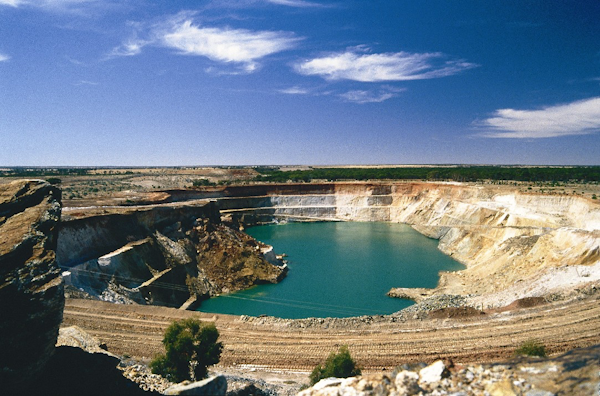439. Environmental offsets 7. Offset duration
For offsets to do their job, they need to be in place and delivering their benefits for at least as long as the development has its impacts. Usually that means forever, more-or-less. This has several implications for the design of an offset program.
If you clear vegetation for buildings, in practical terms that vegetation is never coming back. In Australia, miners have an obligation to do environmental restoration of their mine sites when mining is completed, but there are multiple reasons why we should have low expectations about that. One reason is that it’s hard to restore the original ecological values if what’s left is a big hole in the ground full of water.

So we should usually expect that offsets need to be maintained permanently.
In offset schemes where the developer implements their own offset, or pays a third party to do an offset, or buys an offset credit, there is typically a requirement for the offset to be maintained in perpetuity. That’s good, but there are consequences for the scheme as well, not just the landholders. We can only be confident that sufficient maintenance activities will actually happen if the scheme (a) has effective monitoring processes in place, (b) applies strong enforcement mechanisms if needed (e.g., fines for non-compliance), and (c) maintains this monitoring and enforcement regime permanently. From my observation, these requirements are often not met. Without them, it is very likely that an offset project area will eventually degrade, at which point we will still be left with the impact but no offset to counter it.
So that’s a clear implication. A scheme that creates permanent offsets requires a permanent budget for serious monitoring and enforcement.
In offset schemes where the developer pays money into a fund and this transfers the liability to the government, the amount that is charged to developers needs to be sufficient to maintain the offset project “permanently”. That raises the question, how many years of project maintenance should the scheme budget for when working out how much to charge the developer? How long is “permanently”?
In climate-change policy, an offset project that is contracted to last for 100 years is often considered to be “permanent”. Maybe that’s OK. Maybe society, technology or the economy could change so much over that time frame that it’s fair enough to allow for a policy stocktake at that time.
Would it be reasonable to apply the same approach to vegetation/biodiversity offsets? The argument about likely massive changes in society, technology and the economy seems relevant here too. On the other hand, if the vegetation loss really is permanent, why should the developer be allowed to get off paying all the future costs of the offset? Whatever timeframe is used for the budgeting, if clearly needs to be very long. I’d argue for at least 100 years. This is a big challenge for governments, which rarely lock in financial commitments beyond, say, 20 years. But 20 years is clearly not sufficient. It feels like a long time in agency or political terms, but it’s a very small fraction of forever.
To emphasise why this is important, there are lots of things that could go wrong in the long term, leaving us with an offset that needs to be repaired in some way. There could be droughts, floods, fires, weed invasions, broken fences that let in grazing animals, or nesting boxes that fall down. There could be new owners of the land who are unaware that part of the land they have bought is an offset site, or don’t take the maintenance obligations seriously. Even the original owners might not take the maintenance obligations seriously if they know that there are no teeth in the monitoring and enforcement regime.
The bottom line is that a government should not create an offset scheme unless it is willing and able to commit to providing sufficient resources for strong monitoring and enforcement, forever (or let’s say 100 years) and/or is willing to charge developers enough to achieve this. Observing the way that governments and agencies operate, achieving such long-term security of funding would seem to require that the scheme be operated by an institution that is somehow insulated from the whims of future governments to decrease or re-prioritise resources. If the required level of funding security cannot be assured, then we can’t have high confidence that the offset scheme will deliver “no net loss”.